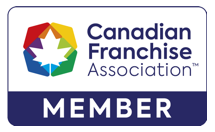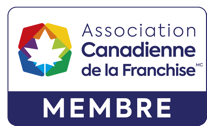With 1.9 billion users worldwide and up to 500 hours of video uploaded every minute, YouTube is the top destination for video consumption on the web. YouTube videos can also be immensely lucrative, not only for YouTube itself but also for content creators. The number of channels earning six figures annually on YouTube grows more than 40% year over year.
With YouTube’s unduplicated popularity as a video sharing platform and the potential for creators to share in the platform’s revenue stream, it is no surprise that becoming a “YouTuber” has emerged as a popular career alternative.
YouTube Videos & Copyright Infringement
One of the growing challenges for YouTube and for content creators, however, has been responding to increasingly prevalent claims of copyright infringement. Original works are protected by copyright law and copyright infringement is the unauthorized use of copyright-protected materials.
Receiving a copyright infringement complaint for a YouTube video can result in, among other things, the video being removed, the loss of ad revenues and in some cases being sued. Some YouTubers are surprised when they receive a copyright infringement complaint for using a still picture or a 5-second video clip.
While, broadly speaking, one cannot use a substantial portion of copyrighted work without consent from the owner of the work, what is considered “substantial” varies greatly according to the context. It can, therefore, be risky to assume, for example, that it’s “ok” to use a copyright-protected clip if it’s less than 20 seconds long. There’s no basis in law for that claim.
Generally, the more views a YouTube video receives, the more likely it is to attract the attention of the copyright owner if there is an infringement.
The Canadian Copyright Act (“Copyright Act”) provides some exceptions to the rule.
Fair Dealing Exception
The fair dealing exception in the Copyright Act permits the use of copyright-protected work without the need to obtain the consent of the copyright holder for the following purposes:
- Research;
- Private study;
- Education;
- Parody;
- Satire;
- Criticism;
- Review; and
- News reporting.
However, even where the use falls into one of these categories, the user is also required to prove that the use or “dealing” is fair.[1] The Supreme Court of Canada has set out a number of factors to be considered in determining whether a dealing is fair:
- The purpose of the dealing;
- The character of the dealing;
- The amount of the dealing;
- Alternatives to the dealing;
- The nature of the work; and
- The effect of the dealing on the work.[2]
The Non-Commercial User-Generated Exception
The non-commercial user-generated exception is found in section 29.21 of the Copyright Act. This provision is sometimes referred to as the “YouTuber” or “Mash-Up” exception. This provision states that it is not an infringement of copyright to use even a substantial amount of a copyrighted work in your own, new, work provided that the new work meets the following criteria:
- The copyrighted work has already been published (ie. made available to the public);
- The source of the copyrighted work is mentioned in the new work if it is reasonable in the circumstances to do so;
- The creator of the new work had no reason to believe that the copyrighted work was itself an infringement on another party’s copyright;
- The use of, and dissemination of, the new work does not have a substantial adverse effect on the copyrighted work; and most importantly
- The new work was created for non-commercial purposes.
What this means is that content creators can generally include copyrighted works in generating their own content so long as they credit the creator(s) of the copyright-protected work, the new content doesn’t adversely impact the distribution of the original work and the new work does not make a profit. This means that running advertisements before a YouTube video and sharing in the ad revenue stream from a popular video would disentitle someone from enjoying the Mash-Up exception.
Consult with a Copyright Lawyer Before Publishing Content on YouTube
Before you quit your day job to become the next YouTube star, be sure to consider the risks and exceptions discussed above to ensure that your work complies with the Copyright Act and that you’re able to make a profit.
If you have questions about the use of copyright-protected materials or think your own rights may have been infringed, the entertainment and media law lawyers at Mills & Mills LLP can assist. To learn more about how we may be able to assist you please reach out to us online or by telephone at (416) 863-0125.
[1] McKeown, John S. Fox Canadian Law of Copyright and Industrial Designs, 4th ed. Toronto: Thomson/Carswell, 2003 (loose-leaf) at p. 23-6.
[2] The definitive fairness test was set out in the 2004 Supreme Court of Canada case, CCH Canadian Ltd. v. Law Society of Upper Canada [2004] 1 SCR 339 [CCH]. The court in CCH found that, in some contexts, there may be factors other than those listed above that a court may consider in deciding whether the dealing is fair (CCH at para 60); see also, Hubbard v. Vosper [1972] 1 All E.R. 1023 (C.A.) [Hubbard].

 2 St Clair Ave West
2 St Clair Ave West


